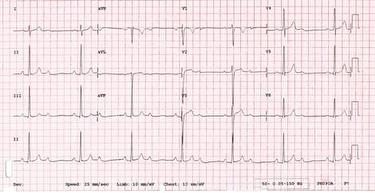The case
Description
- 17-year-old male athlete was referred for specialist investigation after an abnormal ECG on routine pre-participation cardiac evaluation.
- He had been participating in competitive exercise since the age of 12 years.
- His current regime consisted of swimming for 20 hours and cycling for 6 hours per week.
- He was asymptomatic. There was no past medical or family history of note.
- He denied recreational or performance enhancing drug use. Cardiac examination identified bradycardia of 40 beats per minute.
- A transthoracic echocardiogram revealed a structurally normal heart.
The 12-lead ECG is shown below.

Test your knowledge
Interested in learning more?
Access the ESC e-learning platform and discover the EAPC Sports Cardiology online courses.
Not yet an EAPC member?
Note: The views and opinions expressed on this page are those of the author and may not be accepted by others. While every attempt is made to keep the information up to date, there is always going to be a lag in updating information. The reader is encouraged to read this in conjunction with appropriate ESC Guidelines. The material on this page is for educational purposes and is not for use as a definitive management strategy in the care of patients. Quiz material in the site are only examples and do not guarantee outcomes from formal examinations.




 Our mission: To reduce the burden of cardiovascular disease.
Our mission: To reduce the burden of cardiovascular disease.